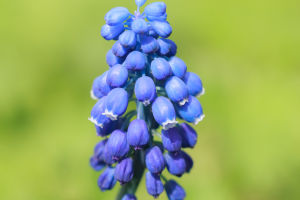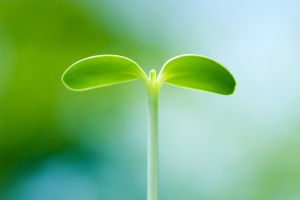Plants are a fundamental part of our environment, playing crucial roles in ecosystems, agriculture, and even human health.
To truly understand how plants contribute to life on Earth, it’s important to delve into the characteristics of plant growth.
Plant growth involves a complex process influenced by various factors, including internal and external conditions. Let's explore the main characteristics of plant growth, shedding light on how plants develop from seeds into mature organisms.
1. Germination: The Beginning of Growth
The first stage of plant growth is germination, the process through which a seed begins to grow into a new plant. This phase typically starts when a seed absorbs water, activating enzymes that trigger the growth process. Several conditions are essential for successful germination, including the right amount of moisture, proper temperature, oxygen, and light (in some cases).
During germination, the seed coat breaks, and the radicle (the embryonic root) emerges first, followed by the shoot that later becomes the plant's stem and leaves. The ability to germinate successfully is the first sign of healthy plant growth and lays the foundation for subsequent developmental stages.
2. Root Development: Anchoring and Nutrient Absorption
The development of a root system is another key characteristic of plant growth. Roots serve two primary purposes: anchoring the plant to the ground and absorbing nutrients and water from the soil. The root system expands as the plant matures, extending deeper into the soil to gather water and nutrients.
Root growth is influenced by factors such as soil composition, moisture levels, and the presence of essential nutrients like nitrogen, phosphorus, and potassium. Healthy root development is crucial for the overall vitality of the plant, as it supports stability and provides the nutrients required for further growth.
3. Shoot Growth: Reaching for Light
While roots grow beneath the soil, shoots grow upward toward the light. The shoot consists of the stem, leaves, and any reproductive structures, such as flowers or fruit. The process of shoot growth is powered by phototropism, where plants grow in the direction of light. This movement allows them to maximize photosynthesis, the process by which they produce their food.
The rate of shoot growth can be influenced by light intensity, temperature, and the availability of water and nutrients. Plants with a healthy, robust shoot system can efficiently produce energy, which fuels continued development.
4. Photosynthesis: The Engine of Growth
One of the most important processes for plant growth is photosynthesis, where plants convert sunlight, carbon dioxide, and water into glucose (a form of sugar) and oxygen. This process occurs in the plant's leaves, specifically in organelles called chloroplasts, which contain chlorophyll, the pigment responsible for the plant's green color.
Photosynthesis is not just crucial for plant growth but also for life on Earth, as it produces the oxygen we breathe. Plants need adequate sunlight, water, and carbon dioxide to perform photosynthesis effectively, making these external factors critical to their growth.
5. Cell Division and Enlargement: Expanding the Plant
A key characteristic of plant growth is the continuous process of cell division and cell enlargement. In plants, growth occurs at regions called meristems, which are found at the tips of roots and shoots. These meristems are responsible for the production of new cells through a process known as mitosis.
After the new cells are produced, they undergo cell enlargement, where they increase in size by absorbing water into the central vacuole. This enlargement helps the plant grow taller, develop thicker stems, and expand its leaf size, all essential for absorbing sunlight and carbon dioxide.
6. Secondary Growth: Thickening of Stems and Roots
While most people think of plant growth as the vertical or outward expansion, plants also undergo secondary growth, which involves the thickening of their stems and roots. This process is primarily found in woody plants, such as trees, and is facilitated by tissues known as the vascular cambium and cork cambium.
Secondary growth allows plants to become stronger and more resilient, supporting larger structures and greater heights. It’s also essential for the formation of bark, which protects trees from environmental stressors like pests and disease.
7. Flowering and Reproduction: The Cycle of Life
A defining characteristic of plant growth in mature plants is flowering and reproduction. Flowers serve as the reproductive organs of plants, producing seeds for the next generation. The transition to flowering is influenced by internal factors (hormones) and external conditions such as light and temperature.
After successful pollination, the flowers produce seeds encased in fruits, which helps with dispersal and allows the plant species to propagate and survive over time. This reproductive phase is a critical part of the plant’s life cycle, ensuring its continuation through future generations.
8. Adaptation to the Environment
Plants have evolved various growth strategies to adapt to their environments. For instance, desert plants like cacti have adapted to grow in low-water conditions by developing thick, water-storing tissues. Meanwhile, plants in dense forests may grow taller to outcompete others for sunlight.
Different plant species exhibit different growth characteristics based on the climate, soil, and water availability in their natural habitats. This adaptability allows plants to thrive in diverse environments, from tropical rainforests to arid deserts.
Plant growth is a dynamic and multifaceted process that involves germination, root and shoot development, photosynthesis, and reproduction. Each stage plays a critical role in the overall health and survival of the plant. Factors like light, water, temperature, and nutrients significantly influence these growth stages, dictating the plant’s ability to thrive. Understanding these characteristics provides insight into how plants sustain ecosystems, contribute to agriculture, and influence life on Earth. By learning more about plant growth, you can better appreciate their vital role in supporting all forms of life.


